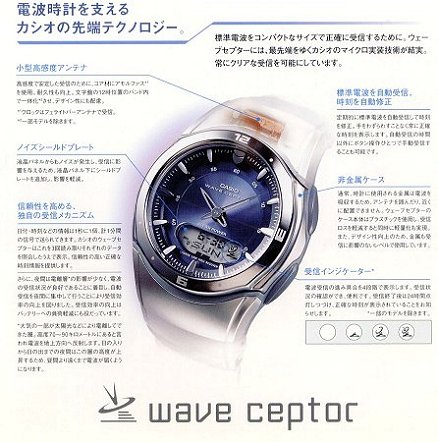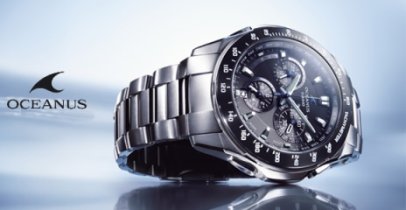Casio released the first solar atomic watch in November 2001, the WVA-300 . According to Casio “The watch shattered the common sense of the industry, which had believed it was not possible to build an advanced-function watch using solar cells.”

A number of watch companies have since combined solar power functionality with their atomic watches. The basics remain pretty much the same across the board- light is absorbed by silicon solar cells located beneath the dial and converted into electricity which is used to power the watch via a special secondary battery. In most cases, a fully-charged battery will keep the watch going for months on end.
Although these watches are generally referred to as solar atomic watches it should be noted that they are by no means limited to Solar light sources for their power, but can use artificial light sources as well. Though Solar light sources will generally give the watch a greater charge in a shorter time.
Three major brands marketing Solar atomic watches are Seiko, Citizen and Casio.
Lets have a look at the different types of solar atomic watches that are available from them.
At the upper end you have the Seiko Brightz, Casio Oceanus and Citizen Atessa lines. Of these three, the Oceanus line of solar atomic watches marketed by Casio are more readily available since the Seiko and Citizen lines are are limited to the Japanese or Asian markets.
Casio chalked up a first for itself when it released in June 2005 their Oceanus solar atomic watches, these timepieces being the world’s first solar atomic watches to have a chronograph function. The Oceanus has a sapphire crystal face and sensors that are embedded in the watch dial. It is these sensors that feed the light energy into the cell, which is located under the dial.

With not only atomic calibration but also solar power you don’t have to worry about the precision of your watch. It’s no secret that once things start slowing down or the time is shown incorrectly, it means your battery needs to be changed. For function-heavy watches such as Casio’s Oceanus solar atomic watches, this can be a real hassle since the more functions you use, the quicker the battery drains. But with solar power constantly charging your battery, you don’t have to worry about that.
